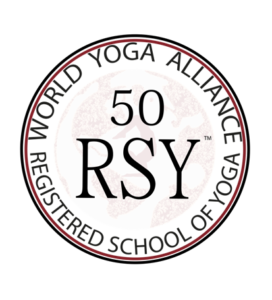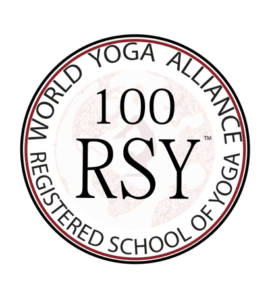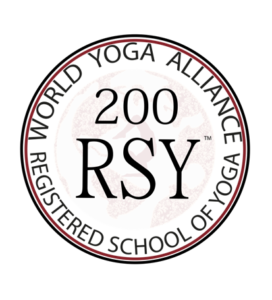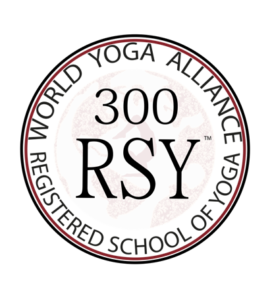The four paths of Yoga
THE FOUR PATHS OF YOGA
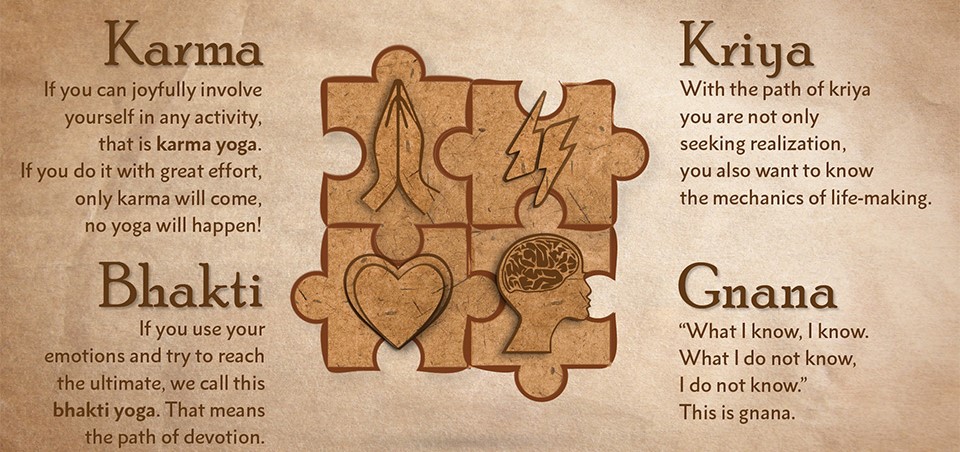
KARMA YOGA – THE YOGA OF ACTION
Karma Yoga is the Yoga of Action. It is the path chosen primarily by those of an outgoing nature. It purifies the heart by teaching you to act selflessly, without the feeling of gain or reward. By getting detached from the fruits of your actions and surrendering and offering them up to God, you learn to come out of the ego.
PRINCIPLES OF KARMA YOGA
“Karma Yoga is the selfless devotion of all inner as well as the outer activities as a Sacrifice to the Lord of all works, offered to the eternal as Master of all the soul’s energies and austerities.” Bhagavad Gita
RIGHT ATTITUDE
It’s not what you do that counts, it’s the attitude while doing it that determines if a job is a karma yoga job, i.e. a liberating job, or a binding job. Work is worship. Swami Sivananda advises us to “give your hands to work, and keep your mind fixed at the lotus feet of the Lord.”
RIGHT MOTIVE
Same as attitude. It is not what you do that counts but your real motive behind it. Your motive must be pure. Swami Sivananda says: “Man generally plans to get the fruits of his works before he starts any kind of work. The mind is so framed that it cannot think of any kind of work without remuneration or reward. A selfish man cannot do any service. He will weigh the work and the money in a balance. Selfless Service is unknown to him.”
PERFORM YOUR DUTY
Often “duty” is referred to as “righteousness”. You will incur demerit if you shun your duty. Your duty is towards God, or Self, or the Inner Teacher who teaches you through all the specific circumstances of your life as they appear.
DO YOUR BEST
Whatever you have to do, do your best. If you know of a better way to serve, you must use it. Do not hold back because of fear of effort or because of fear of criticism. Do not work in a complacent manner just because no one is watching or because you feel the work is not for you. Give your best. Try to do such actions that can bring maximum good and minimum evil. Do Karma Yoga increasingly.
GIVE UP RESULTS
God is the doer. You are not the doer. You are only the instrument. You do not know God’s intentions or God’s plans. God is the actor. It is the desire for action that binds the individual. It is the detachment from the action that will dissolve the karmic seeds. Detachment from results also means detachment from the type of job itself. There is no job that is inferior or superior to a different job.
BHAKTI YOGA – The path of devotion or divine love
This path appeals especially to those human beings who have an emotional nature. The Bhakti Yogi is motivated mainly by the power of love and sees God as the embodiment of love. Through prayers and rituals, he/she surrenders himself/herself to God, channelizing emotions into unconditional love or devotion. Chanting or singing the praises of God form a substantial and major part of Bhakti Yoga.
RAJA YOGA – The highest form of mind control
Often called the “Royal path” it offers a collective method for controlling the waves of thought by turning our mental and physical energy into spiritual energy. Raja Yoga is also called Ashtanga Yoga referring to the eight limbs leading to absolute mind control. The chief practice of Raja Yoga is meditation. It also includes all other methods which helps one to control and take over body, energy, senses, and mind. The Hatha-Yogi uses Relaxation and other practices such as Yamas, Niyamas, Asana, Mudras, Bandhas etc.. to gain control of the physical body and the subtle life force called Prana.to control Pranamaya kosha – Pranic body When body and energy are under control meditation comes naturally.
ASHTANGA – The eight limbs
Disciplines which purify the body and mind, ultimately leading the yogi to enlightenment. These 8 limbs are:
- Yamas
- Ahimsa or non-violence
- Satyam or truthfulness
- Brahmacharya or moderation in all things (control of all senses). Also refers to celibacy
- Asteya or non-stealing
- Aparigraha or non-covetousness
- Niyamas
- Saucha or purity – this internal and external cleanliness.
- Santosha or contentment
- Tapas or austerity
- Swadhyaya or study of the sacred texts
- Ishwara Pranidhana which is constantly living with an awareness of the divine Presence (surrender to God’s Will)
- Asanas – Postures
- Pranayama – control of the breath.
- Pratyahara – withdrawal of the senses in order to still the mind.
- Dharana – concentration or one-pointedness or focus. The last 3 steps constitute the internal practice of Raja Yoga. When Dharana is achieved, it leads to Dhyana
- Dhyana – meditation is that state of pure thought and absorption in the object of meditation. There is still duality in Dhyana. When mastered it leads to the Samadhi
- Samadhi – the bliss or superconscious state. In Samadhi non-duality or oneness is experienced. This is the deepest and highest state of consciousness where body and mind have been transcended and the Yogi is one with the Self or God.
JNANA YOGA – YOGA OF KNOWLEDGE
Jnana (wisdom or knowledge) is considered the most difficult of the four main paths of yoga, requiring great strength of will and intellect. In Jnana yoga, the mind is used to inquire into its own nature and to transcend the mind’s identification with its thoughts and ego Gyana means knowledge. Gyana Yoga is the path where reality is discovered through insight, practice, and knowledge. Gyana Yoga has four principles: Viveka – Discrimination, Vairagya – Renunciation, Shatsampatti – The Six Treasures, Mumukshtva – Constant Striving for God.
VIVEKA – Discrimination
Viveka is the purest form of knowledge. It can also be described as the supreme authority of our conscience. Our conscience tells us what is right and what is wrong. Mostly we know very well what we should do, however, our egoistic desires generally show themselves as stronger and drown the voice of conscience within us.
VAIRAGYA – Renunciation
Vairagya means to liberate oneself inwardly from any desire for earthly pleasure or possessions. A Gyana Yogi has realized that all worldly pleasures are unreal and are therefore without lasting value. A Gyana Yogi seeks the unchanging, the eternal Supreme – God. All things of this earthly realm are transitory and therefore a form of unreality. Reality is the Atma, the Divine Self, which is indestructible, eternal and unchanging. The Atma is comparable to space. Space is always space – one cannot burn it or cut it. If we put up walls we create single “individual” compartments. However, space does not change itself because of this, and one day when the walls are removed, there only remains undivided endless space.
SHATSAMPATTI – The Six Treasures
This principle of Gyana Yoga comprises six principles:
- Shama – withdrawal of the senses and the mind.
- Dama – control of the senses and the mind. To restrain oneself from negative actions, such as stealing, lying and negative thoughts.
- Uparati – to stand above things.
- Titiksha – to be steadfast, disciplined. To endure through and overcome all difficulties.
- Shraddha – faith, and trust in the Holy Scriptures and the words of the Master.
- Samadhana – to have determination and purpose. Whatever may come, our aspirations should always be directed solely towards our goal. Nothing should ever be able to dissuade us from this.
MUMUKSHTVA – Constant Striving for God
Mumukshtva is the burning desire in the heart to realize God and unite with God. The Supreme and Eternal Knowledge is Atma Gyana, the Realisation of our true Self. Self-Realisation is the experience that we are not separate from God, but are one with God and all of life. When this Realisation dawns, the boundaries of the intellect are opened and absolute. It also becomes clear that whatever harm others, ultimately harms us. So finally we understand and obey the Universal precept of Ahimsa, non-violence. In this way, the path of Gyana Yoga unites with the principles of Bhakti Yoga, Karma Yoga, and Raja Yoga.
